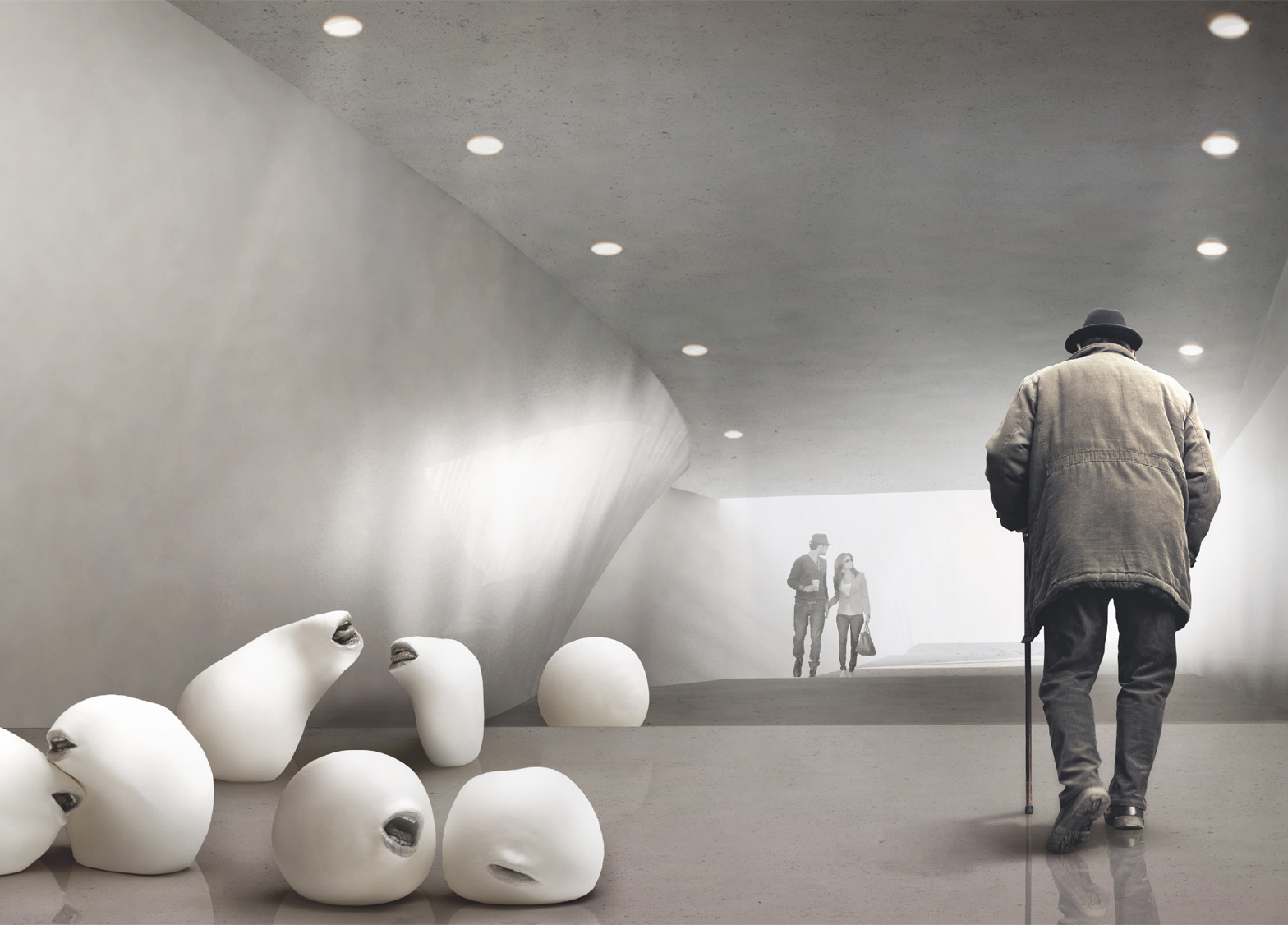Bjarke Ingels' firm has unveiled its plans to build an art gallery that twists across a river in a Norwegian sculpture park (+ slideshow).
Described by Ingels as an "inhabitable bridge", the Kistefos Museum will span the Randselva river that winds through the centre of the Kistefos Sculpture Park near Oslo.
The sculpture park was established in the late 1990s on the site of a former paper mill, and hosts contemporary works by artists including Anish Kapoor and Olafur Eliasson.
BIG's new 1,400-square-metre building will provide indoor gallery space, but also a second river crossing, which aims to improve circulation across the site.
The architect describes it the studio's "first experiment with social infrastructure".
"The museum visit itself will be a bridge, not a goal – and the exhibits inside an interior extension of the promenade through the Sculpture Park," said Ingels.
"With the inhabited bridge, we stumbled upon our first experiment with social infrastructure – a building that serves as a bridge – or a cultural institution that serves as a piece of infrastructure," he added.
The rectilinear building will twist at a midway point over the river, helping to reconcile a height difference between the two banks.
A staircase in the centre of the block will mediate the level change, but also double as a seating area and vantage point for video projections and performance art events.
"A simple twist in the building's volume allows the bridge to lift from the lower forested area towards the south, up to the hillside area in the north," explained the architect.
The rotation will cause one end of the building to be taller than the other, providing two different types of gallery space. On the south side, galleries will be stacked vertically, while a single broad lobby more suitable for large-scale sculptures or installations will face the north bank.
Visitors will enter through the triple-height space at the south, passing the information centre and museum shop on the way to a cafe located at the northern end. Here, an outdoor terrace will give visitors views of the old paper pulp mill and forested landscape.
A band of glazing will run from one end of the building to the other, beginning on one facade at the northern end and transferring onto the roof at the midpoint to create a skylight over the southern galleries.
This arrangement will provide a combination of skylit, side-lit and dark spaces for different types of artwork. Reflective film within in the glass will protect artworks from the sun's damaging UV rays.
Non-glazed areas of the facade will be constructed in brushed stainless steel, these areas can be artificially lit to provide suitable environments for video works and projection.
BIG worked in collaboration with consultants AKT II, Max Fordham, Davis Langdon and GCAM on the design. Construction is expected to begin in 2016 and complete in 2019.
Bjarke Ingels is currently also working with British designer Thomas Heatherwick on Google's new Californian headquarters. Google lost its original land bid to the social network LinkedIn, but acquired a new 7.5-hectare-site nearby, where a scaled-down version of the design is now planned.
Project credits:
Partners in charge: Bjarke Ingels, David Zahle
Project leader: Brian Yang
Collaborators: AKT II, Max Fordham, Davis Langdon, GCAM, MIR
Team members: Alina Tamosiunaite, Christian Dahl, Ryohei Koike, Balaj Alin Iulian, Marcelina Kolasinska, David Tao, Jan Magasanik, Tiina Juuti, Kamilla Heskje, Eva Seo Andersen, Finn Nørkjær, Andreas Klok Pedersen
Client: Kistefos Museum

















